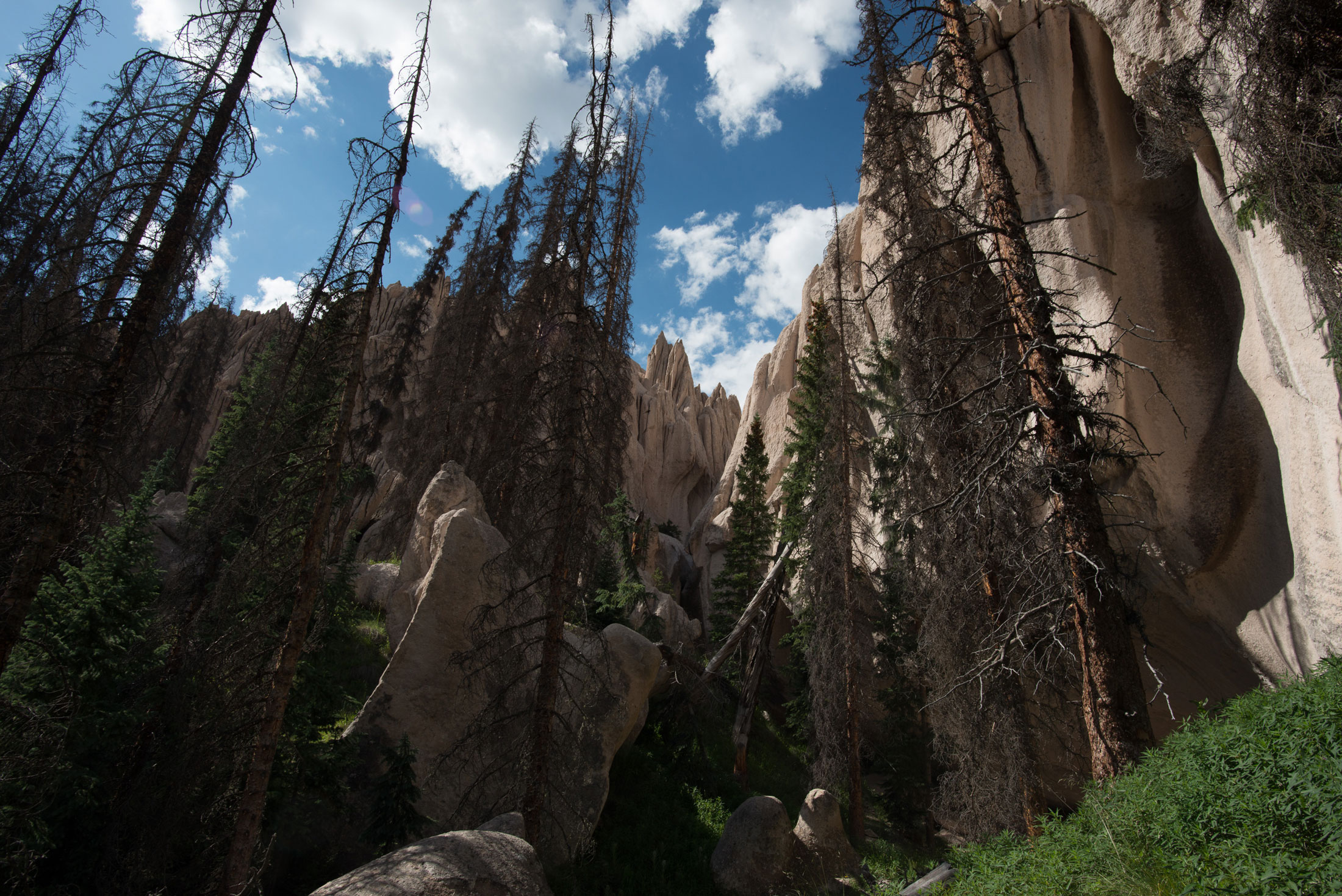West Texas’ Castner Range and southern Nevada’s Avi Kwa Ame — also known as Spirit Mountain — are the United States’ two newest National Monuments.
The two tracts are home to multiple desert plants and animals, some listed as threatened, and carry significance for Native American tribes.
The Biden administration framed the announcement as part of its “commitment to protect historically and scientifically important sites, honor culturally significant areas, and conserve and restore our country’s treasured outdoor spaces.”
The designations come on the heels of the President’s approval of the Willow project, a controversial, decades-long oil drilling venture in far northern Alaska. (The Department of the Interior noted a reduction in the project’s scope since its original proposal in 2021.)
President Biden’s first national monument focused around Colorado’s Camp Hale. Continental Divide National Monument was designated in October 2022. As national monuments under the Antiquities Act of 1906, Castner Range and Avi Kwa Ame are now protected from private development.
Avi Kwa Ame National Monument
Avi Kwa Ame covers several mountain peaks and 506,814 acres of land just west of Lake Mohave along the Nevada/Arizona border. It was previously listed on the United States National Register of Historic Places as a sacred location for Native Americans.
The Mojave, Chemehuevi, and “some” Southern Paiute people count Avi Kwa Ame among the most sacred places on Earth, the White House said in a press release. Eleven other Tribal Nations and Indigenous peoples also celebrate the location.
Avi Kwa Ame also lies within one of the world’s largest Joshua tree forests. Natural springs, dark skies, and “natural soundscapes” characterize the environment.
With National Monument protections, the land creates a link that forms “one of the largest contiguous areas of protected wildlife habitat” in the country, the White House stated. The area now snakes from California’s Mojave Desert in the southwest, northward along the Colorado River watershed to the Lake Mead National Recreation Area, and westward to Grand Canyon National Park.
Key species in Avi Kwa Ame include desert bighorn sheep, Gila monsters, and desert tortoises — the last of which is listed as threatened under the Endangered Species Act.
The administration stressed that the new National Monument’s administrators will still allow a wide range of human activity inside its boundaries. Hunting, trapping, OHV use, wildlife watching, aerial surveys, and a “wide range of other wildlife management activities” will occur in Avi Kwa Ame.
The Department of the Interior (DOI) will work with Nevada’s state wildlife officials to manage those activities and install and maintain “wildlife infrastructure.”

“Recognizing the critical role that sportsmen and sportswomen have played historically — and continue to play — in restoring and conserving bighorn sheep and other wildlife populations in southern Nevada, the proclamation requires representation from the sportsmen and sportswomen community on a monument advisory committee,” the release said.
Tribal Nations will also consult on the area’s management, entering into a “co-stewardship” with the DOI. Visitor facilities are also on tap.
Castner Range National Monument
Castner Range National Monument consists of 6,672 acres of high-desert peaks in the Franklin Mountains, just outside El Paso, Texas. Located on Fort Bliss Military Base, the land served as the training and testing site for the U.S. Army from 1926-1966. Though development from El Paso has encroached on the land in the intervening years, it’s remained off-limits due to unexploded ordnance.
Before that, Native Americans representing myriad Tribes lived there, and their traces are still intact today. “More than 40” known archaeological sites in Castner Range contain living structures, pottery and tools, petroglyphs, and rock art. They’re the cultural resources of Indigenous peoples, including the Apache, Pueblo, Comanche Nation, Hopi Tribe, and Kiowa Indian Tribe of Oklahoma.
Castner Range also hosts a highly diverse ecosystem. Spring blooms of Mexican poppies, high concentrations of creosote, and natural springs are all there. The endangered Sneed’s pincushion cactus and other rare or endemic plants also grow in the area. And it’s a habitat for the American peregrine falcon, golden eagle, mountain plover, Texas horned lizard, black-tailed prairie dog, Baird’s swallow, and the Western burrowing owl.
As planned, the White House wants Castner Range National Monument to become a wilderness corridor. The administration hopes wildlife migration will improve, as will access to the Franklin Mountains for some marginalized El Paso communities.

Castner Range arrives at National Monument status following years of grassroots advocacy to protect it. According to the El Paso Times, community groups have worked to conserve the area since the 1970s.
Secretary of the Interior Deb Haaland visited the site last March to gain perspective on its significance from local leaders. Haaland and a group of El Paso conservationists took a hiking tour along safe corridors to an area that overlooks Castner Range as part of the visit.
“The view was amazing,” Haaland said, per the El Paso Times. “We were so grateful to have a tour guide who pointed out so much of the cultural history and the geologic history of this area.
“The Department of Interior truly wants to make sure that everyone has access to the outdoors, regardless of their ZIP code,” she continued. “We know that nature offers some of the most cost-effective ways to address the climate crisis. We also need to do more to stop the loss of nature and wildlife that we’re witnessing.”
The U.S. Army will manage Castner Range National Monument, “consistent with” protection of historically and culturally significant objects, the White House said. Next steps include starting a land management planning process, including public engagement in the next 60 days. Public access to the site will occur in phases, based on the remediation of its unexploded ordnance.
Though other national monuments protect historic military resources (like Camp Hale), Castner Range will be the first directly managed by a U.S. military branch since national battlefields fell under the National Park Service purview in the 1930s.








